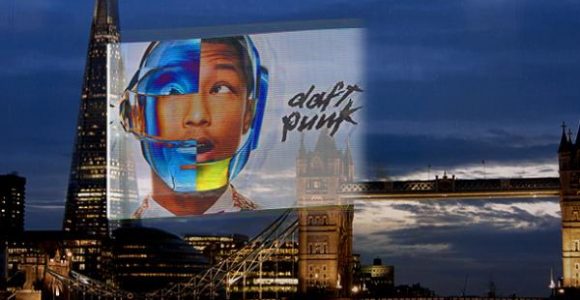Flash advertising will be big business

The next time a giant Big Mac or Coke flashes into your mind when you’re staggering home from the pub, you may not simply have the munchies. And that picture of the model putting on Chanel – no, you’re not daydreaming.
A British startup has created a new advertising system that uses lasers to project images up to 200 metres tall from the sides of tall buildings, enabling advertisers to reach people from virtual billboards in the sky.
Passers-by will see each image for only between one tenth and a quarter of a second, as their eye catches the light from certain angles.
Advertising agencies and big businesses have already signalled their interest, but skyline campaigners have branded the technology “greedy” and said that it could clutter our skies with tacky brands.
The Echo system, from Lightvert, uses a high-speed laser projector to bounce light off a narrow reflective strip fixed to the side of a building, visible up to 1km away.
This creates large-scale images that are captured briefly in the viewer’s eye as result of the “persistence of vision” effect: the same effect that leaves an imprint of a light source on your vision after you’ve turned away.
Daniel Siden, the technology’s inventor, explained: “Think of the strip of light coming off the reflector as like a single vertical row of pixels in a digital image. This strip of light changes so that all of the rows of pixels are displayed in rapid succession. Your eye catches all of these rows as it moves across them and your brain puts together the complete image, which you ‘see’ fleetingly – although technically speaking it’s never there.”

“People often think this could be subversive, but it’s not subliminal advertising as the imagery registers on the conscious level. It’s actually less invasive and more fun than traditional advertising.”
He added: “When passers-by see it, they’re excited; they move back and look around in order to see it again. And they figure out that they can take a picture on their phone by moving it as they shoot.”
Mr Siden is a designer and engineer who previously worked on smaller, LED-based systems that work on the same principles, creating installations with Chris Levine, the artist, and adverts for Selfridge’s and Chanel. Many businesses around the world are known to get LED screens for advertising different products and services, so this form of advertising is not entirely new. However, the concept of flashing images for a short span up in the skyline space is definitely an innovative way of catching consumers’ attention.

The images will only be visible to people for a fraction of a second
The company is working to raise 670,000 of funding and says that it could install working adverts within the year. It has won 250,000 of Smart grant funding from Innovate UK, as well as support from KineticX, a startup incubator from advertising giant WPP. The technology has also been hailed as “exciting” by M&C Saatchi.
Mr Siden said that planning experts have indicated that planning permission should not be a problem outside of conservation areas. He said that the system was safe because of the distance between the projector and passers-by, and images would be above the line of sight of drivers and cyclists and below the field of vision of airline pilots. The images have been tested and shown not to trigger epileptic seizures.

Civic campaigners are critical of the idea, with some branding it crass
Because it uses only one strip of reflected light, the system needs a small fraction of the power, approximately one 20th of a standard 96-sheet digital outdoor display for an image of the same height.
The owners of high-rise properties could use the system to make large returns from the small outlay of installing the laser projector and reflective strip. The company puts the cost of a “hyper-scale” unit measuring 100 metres at under 750,000, based on the present design, anticipating that costs will drop.
Still, some civic campaigners dislike the technology and believe it delivers sneaky advertising that is borderline subliminal, whatever the semantics. Barbara Weiss, of the Skyline Campaign, said: “It’s actually offensive. London’s latest tall buildings are not particularly well-built or well designed, but unfortunately people are forced to look at them. Adding crass advertising that’s invasive in its nature will only make it worse.”



